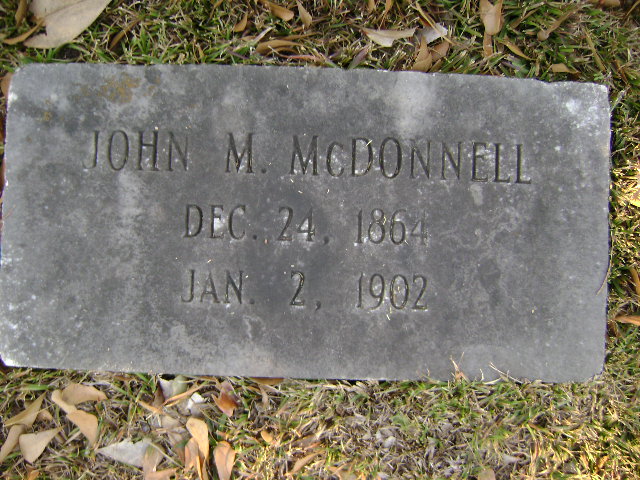 |
| Photo by James Allen |
"TERRIFIC EXPLOSION FOLLOWED BY DEATH
An Awful Catastrophe at the Central Railroad Shops Here Yesterday Morning -- Engine was Blown to Atoms and Two Men were Instantly Killed, One More Died Soon After, and Three are Supposed to be Fatally Injured -- Six Others are Painfully Hurt -- Theories as to the Cause of the Explosion -- Harrowing Scenes when Loving Ones Gathered About the Yards.
The Telegraph's extra yesterday morning told in detail the story of the disaster at the Central of Georgia Railroad Company's shops, and more than one thousand people rushed for the extras as fast as they could be issued from the press.
The explosion was heard for more than seven miles in the country, and the havoc wrought was almost complete.
The dead are:
JOHN MCDONNELL, engine inspector, who was on top of the engine.
URIAH CORNELIUS, a negro who was in the cab assisting Mr. McDonnell.
E. W. HODGES, who was crossing the yard about 100 feet from the engine.
Injured:
J. I. O'NEAL, machinist, comminuted compound fracture right elbow; lacerated wound back of head; brain injury; will die.
R. L. WILLIS, blacksmith, scalded.
HENRY FOX, engine inspector, comminuted fracture both legs below knee; compound fracture right ankle; lacerated over symphis [sic] pubis; condition bad.
E. D. HAMBRICK, carpenter, lacerated wound of face and head.
W. M. WILSON, carpenter, fracture right rib; lung injury; serious.
J. M. MEADOWS, carpenter, lacerated wound right ear; contused right hip and knee; bruised all over.
PETER HAMMOCK, col., scalp wound; contusion of left hip, and right side of head.
WESLEY JOHNSON, colored, cut right side of face; right hip bruised; not serious.
PETER ADAMS, colored laborer, contusion of right shoulder.
All except R. L. Willis and Peter Adams are in hospital.
Mangled Remains.
The body of Mr. McDonnell was broken to pieces. The bone in each leg was broken in several places. The head was cut away so that only a small portion of the rear skull remains. The face was torn off and destroyed. Mr. McDonnell was at work on top of the engine, trying to adjust the pop valve, which had on the day before been found defective. The negro Cornelius was assisting him by firing the engine and getting up steam so the pop could be set to go off at 160 pounds pressure. It was necessary to get up that much steam in order to set the valve at that [?].
Cornelius was broken up as badly as Mr. McDonnell. His head was blown away and his ribs were broken. These two bodies were found nearly a hundred feet from the engine.
Mr. Hodges was crossing the yard in front of the engine and about 100 feet distant when the explosion occurred. He was not killed outright, but some huge object struck him in the side, breaking three ribs, and something else broke his leg. The wound in the side was fatal, and he died soon after being taken up from where he fell." [Macon Telegraph (Georgia), 3 January 1902, pg. 1 - Viewed online at GenealogyBank.]
Next up: "Where the Explosion Occurred" and "Location of the Injured Men."
All Posts in Series:
- Terrific Explosion Followed by Death
- I Cannot Live; You Cannot Do Anything for Me
- A Leg Bone was Found Just Over the Fence
- The Deceased Came to Their Death from the Explosion of an Engine Boiler
- Both Men were Blown Away, and Killed Instantly
- Who the Victims Are
Comments